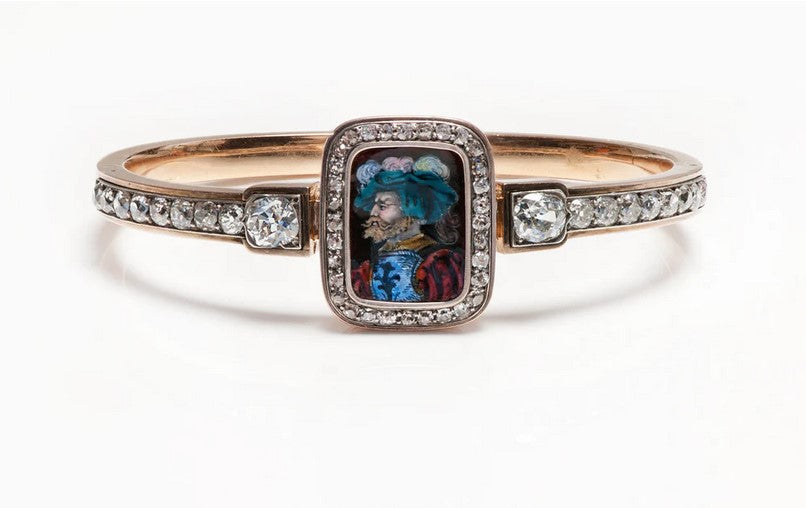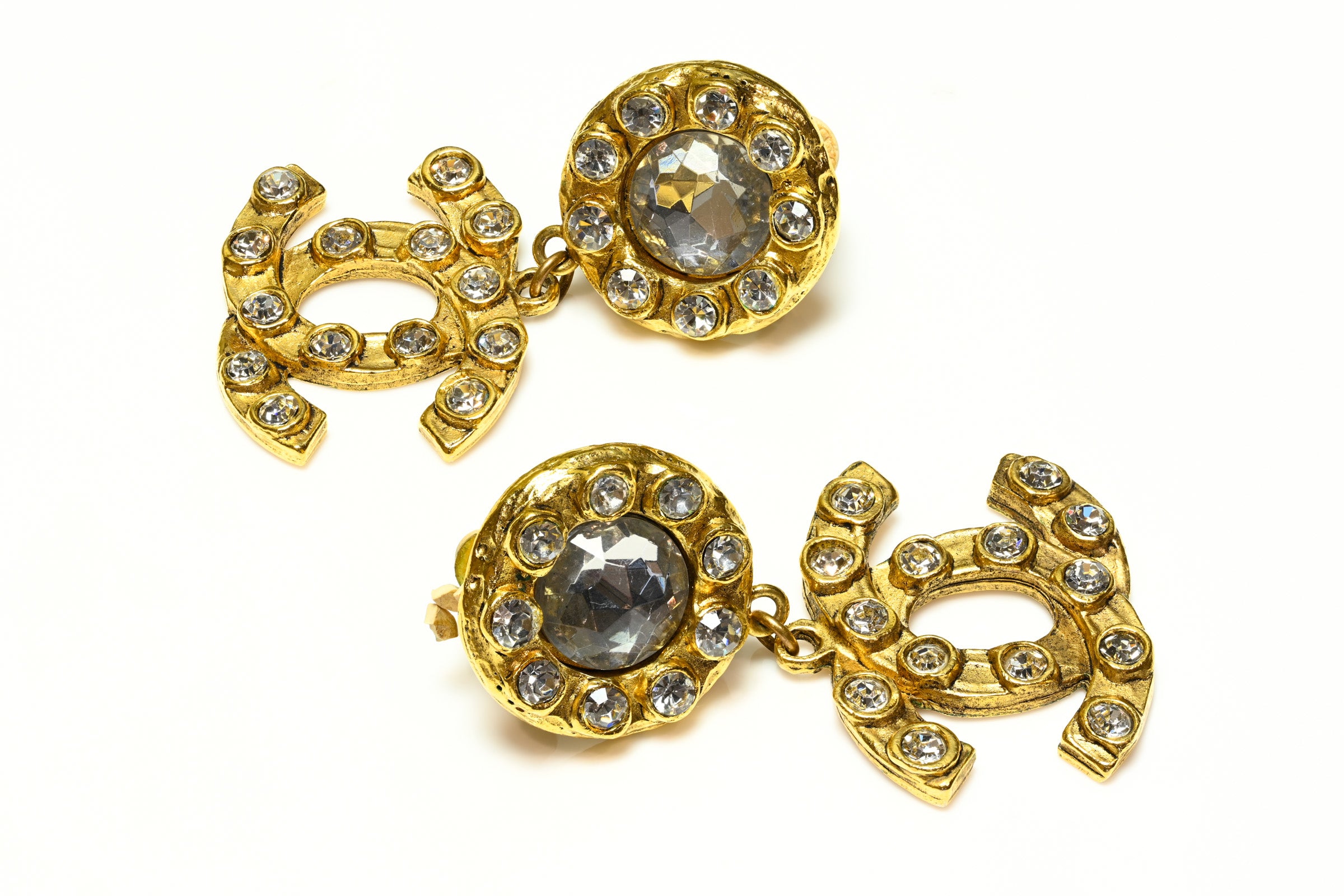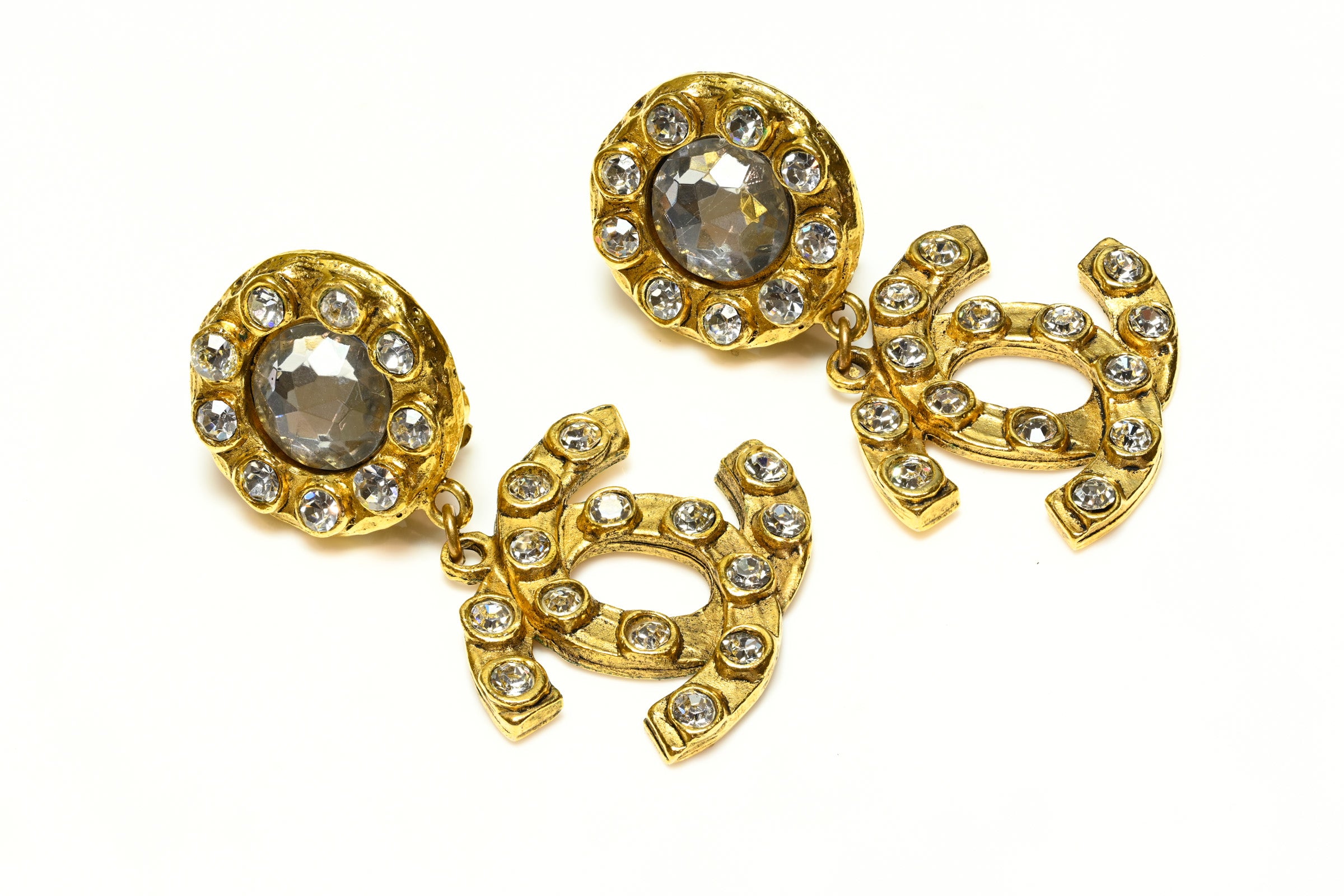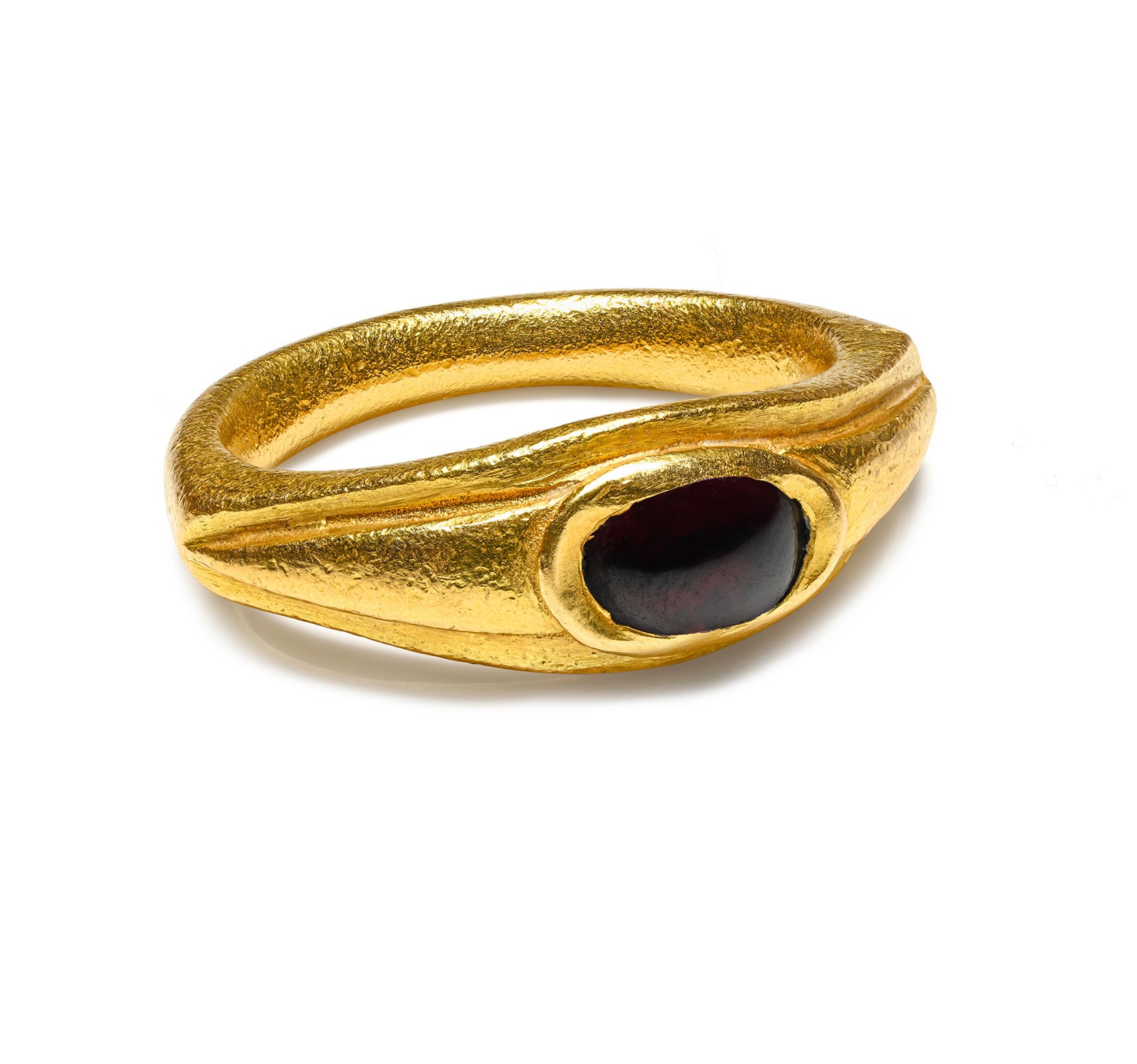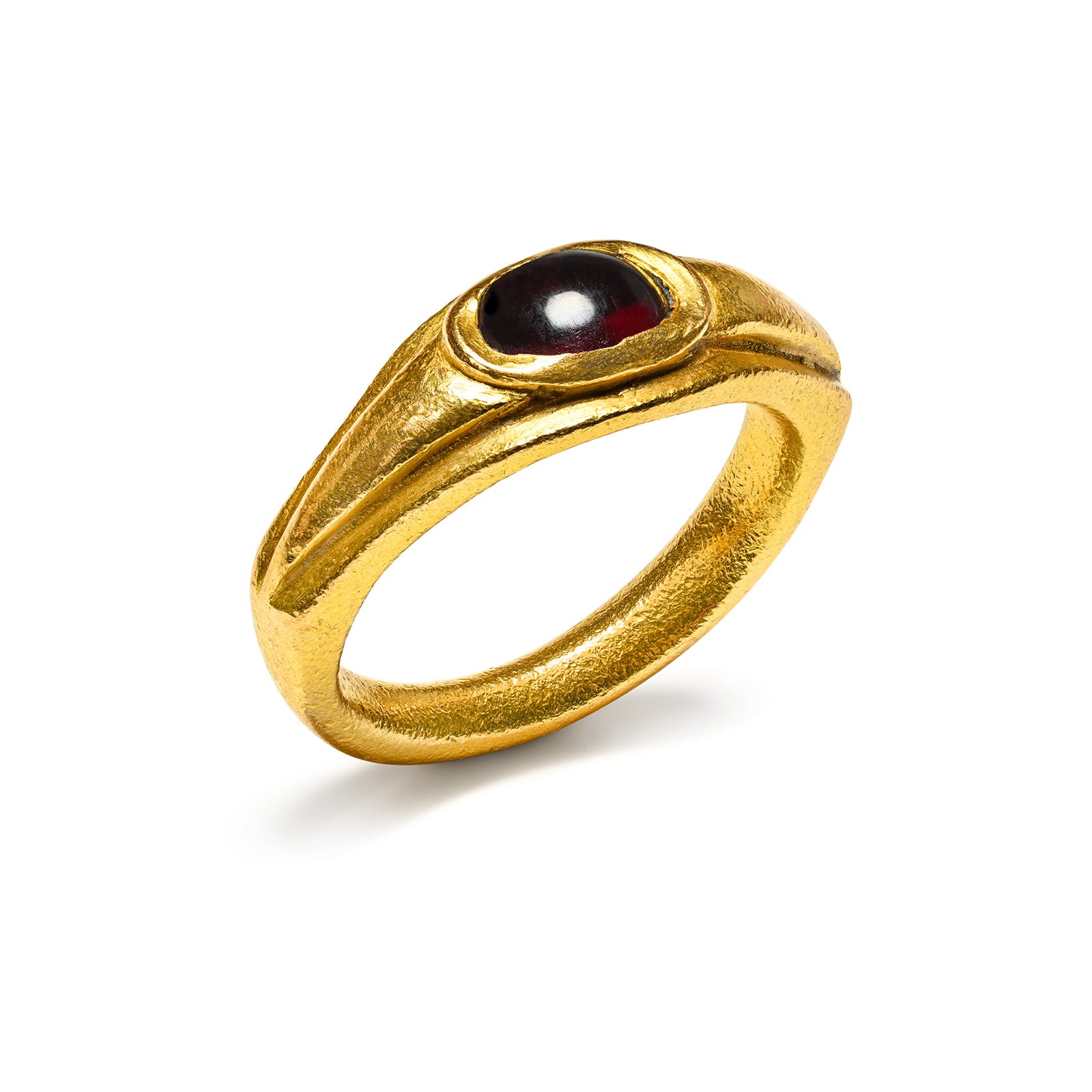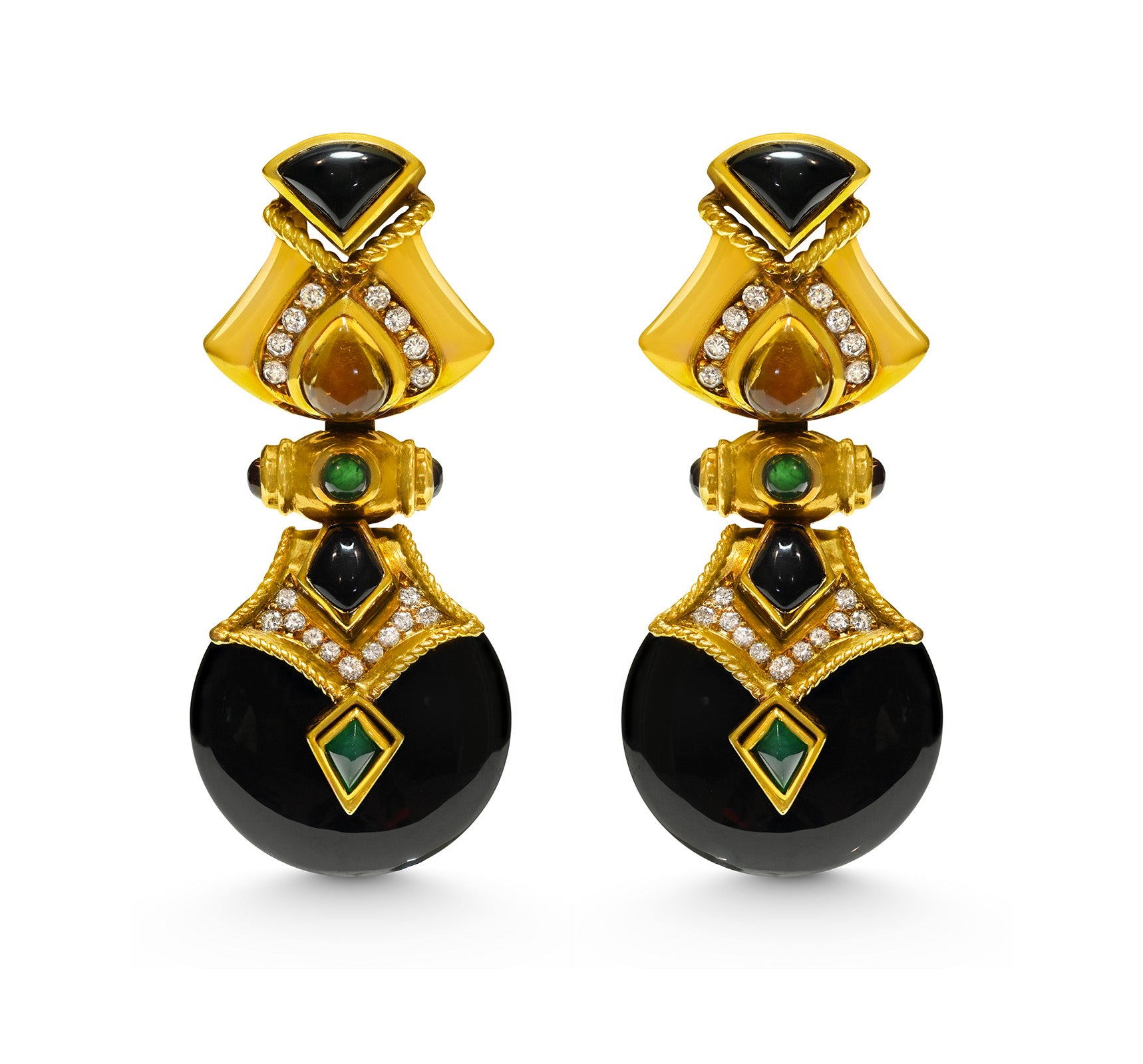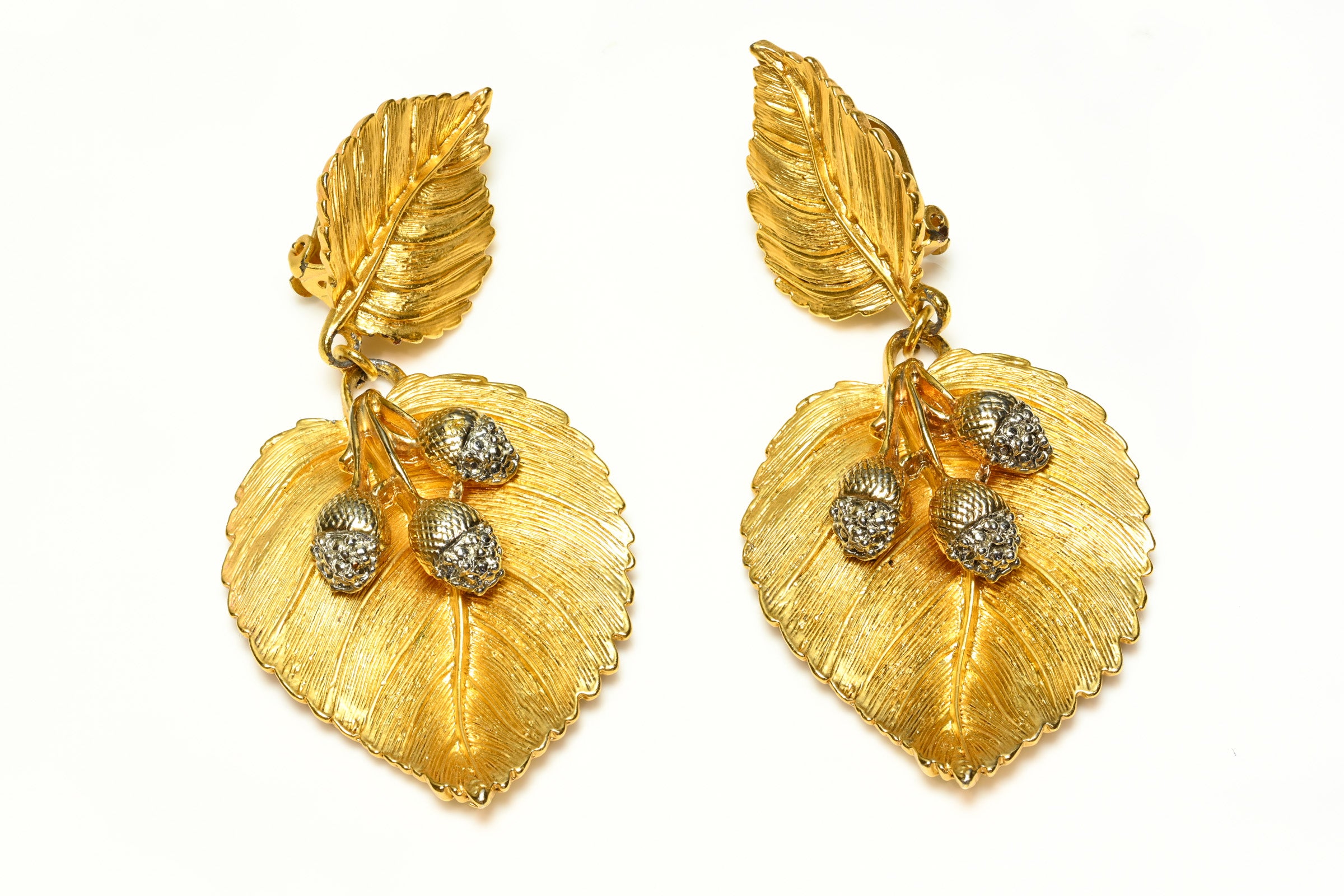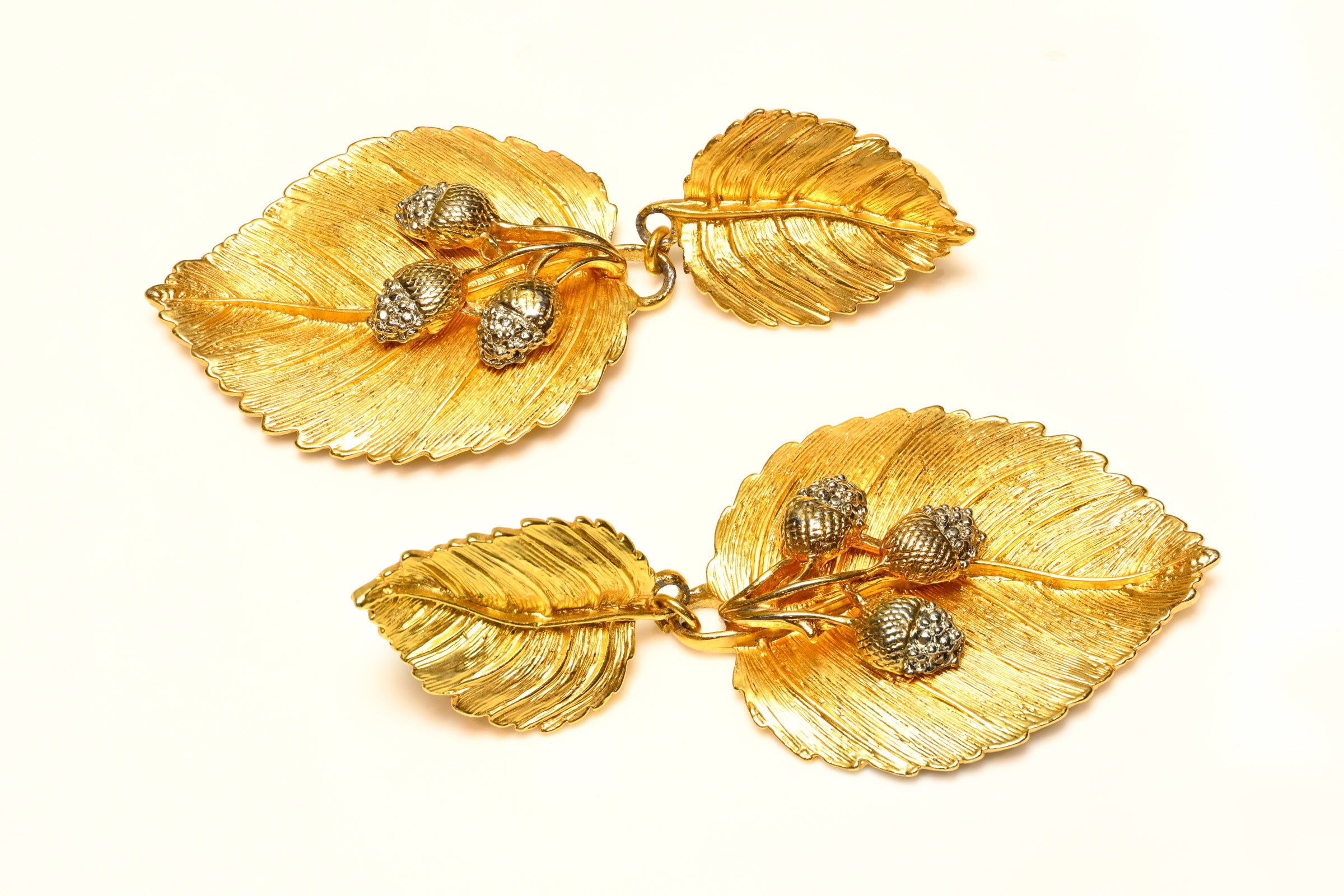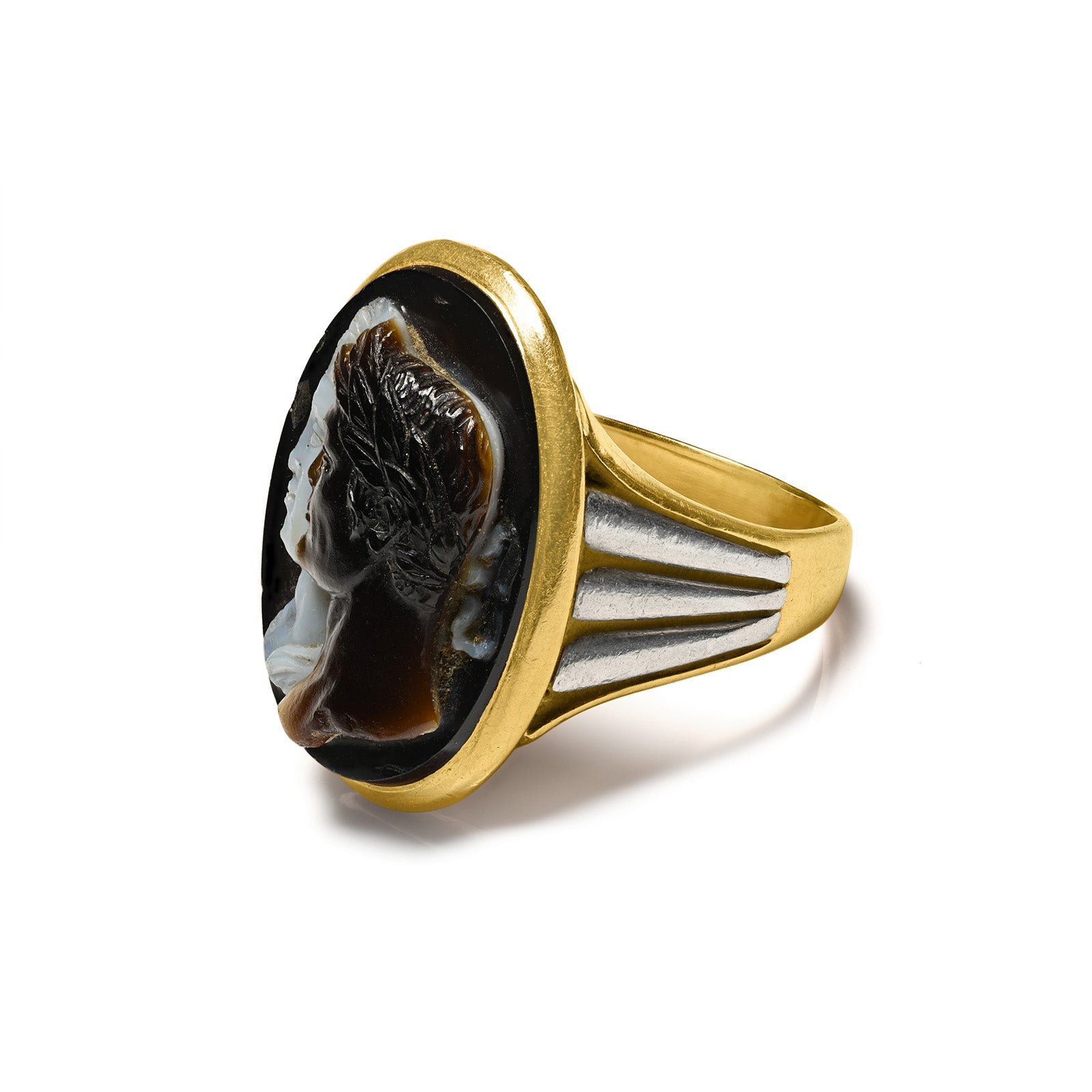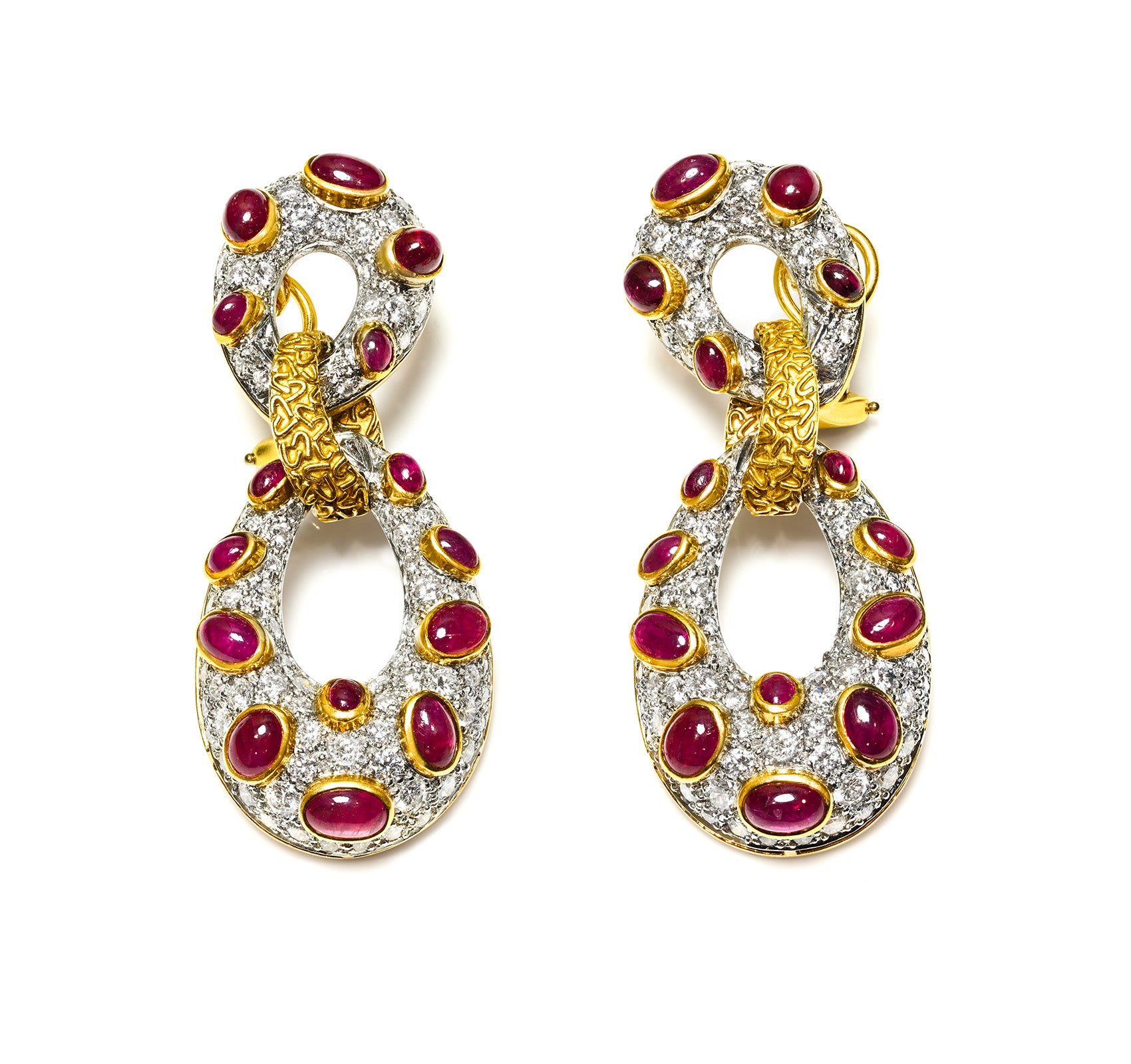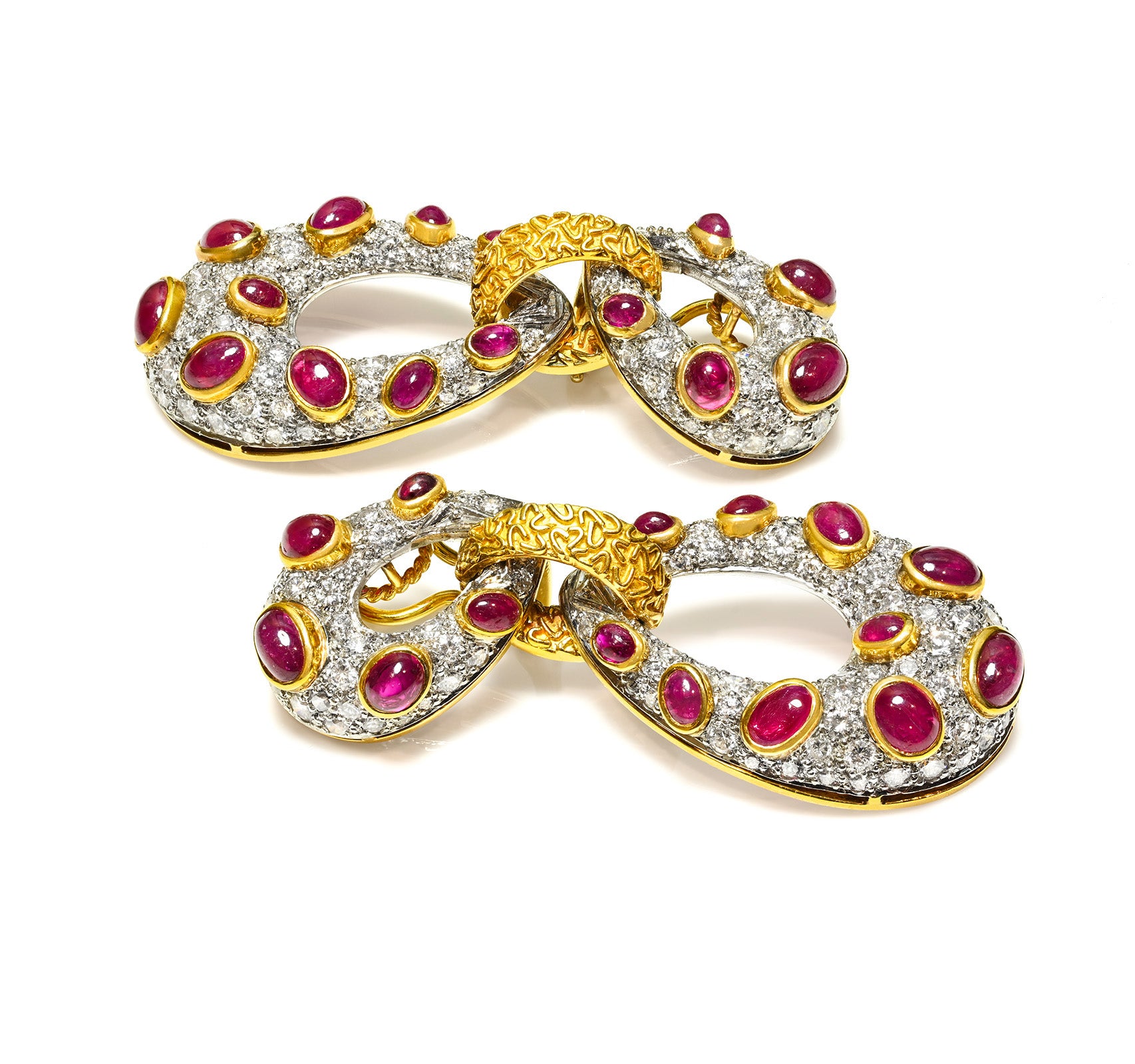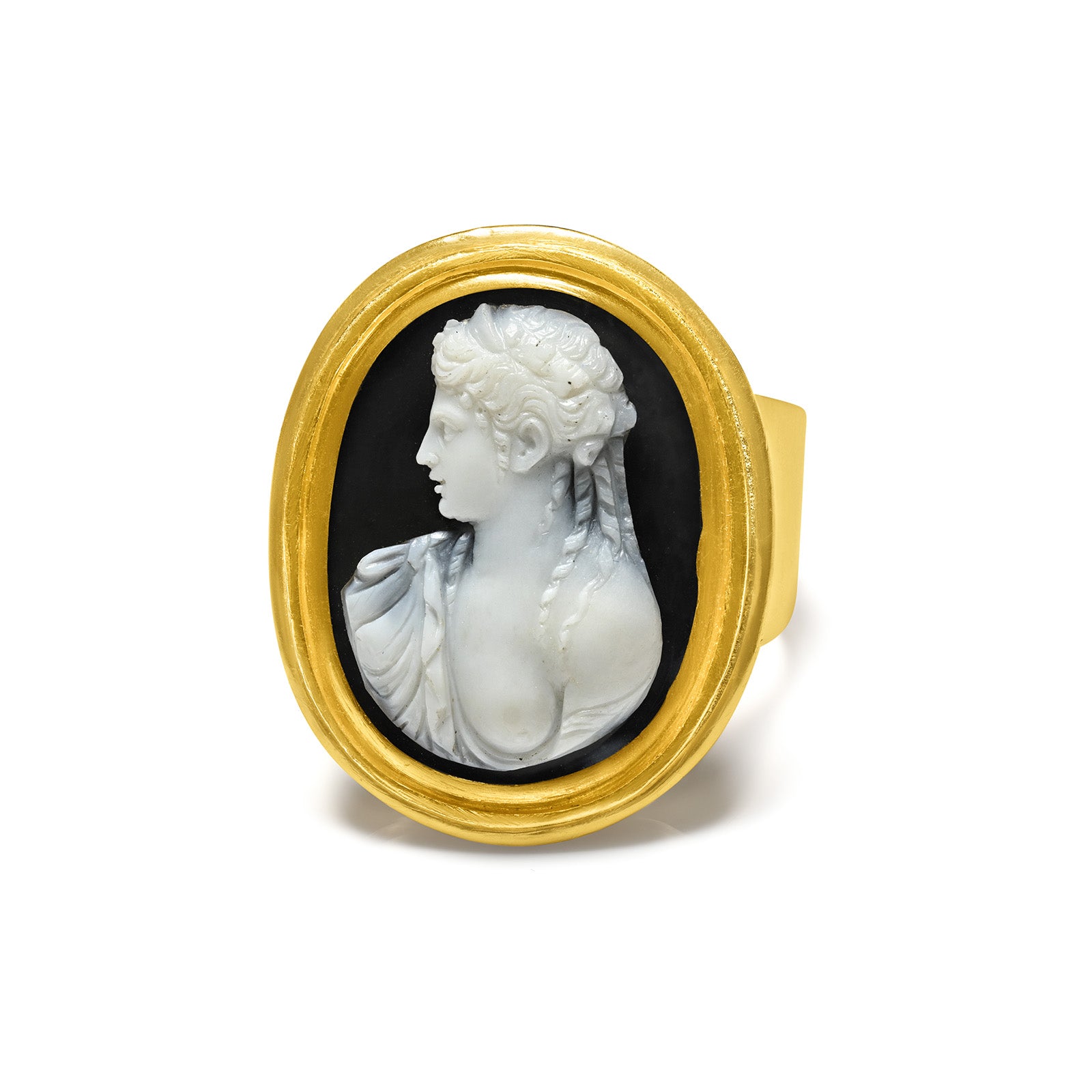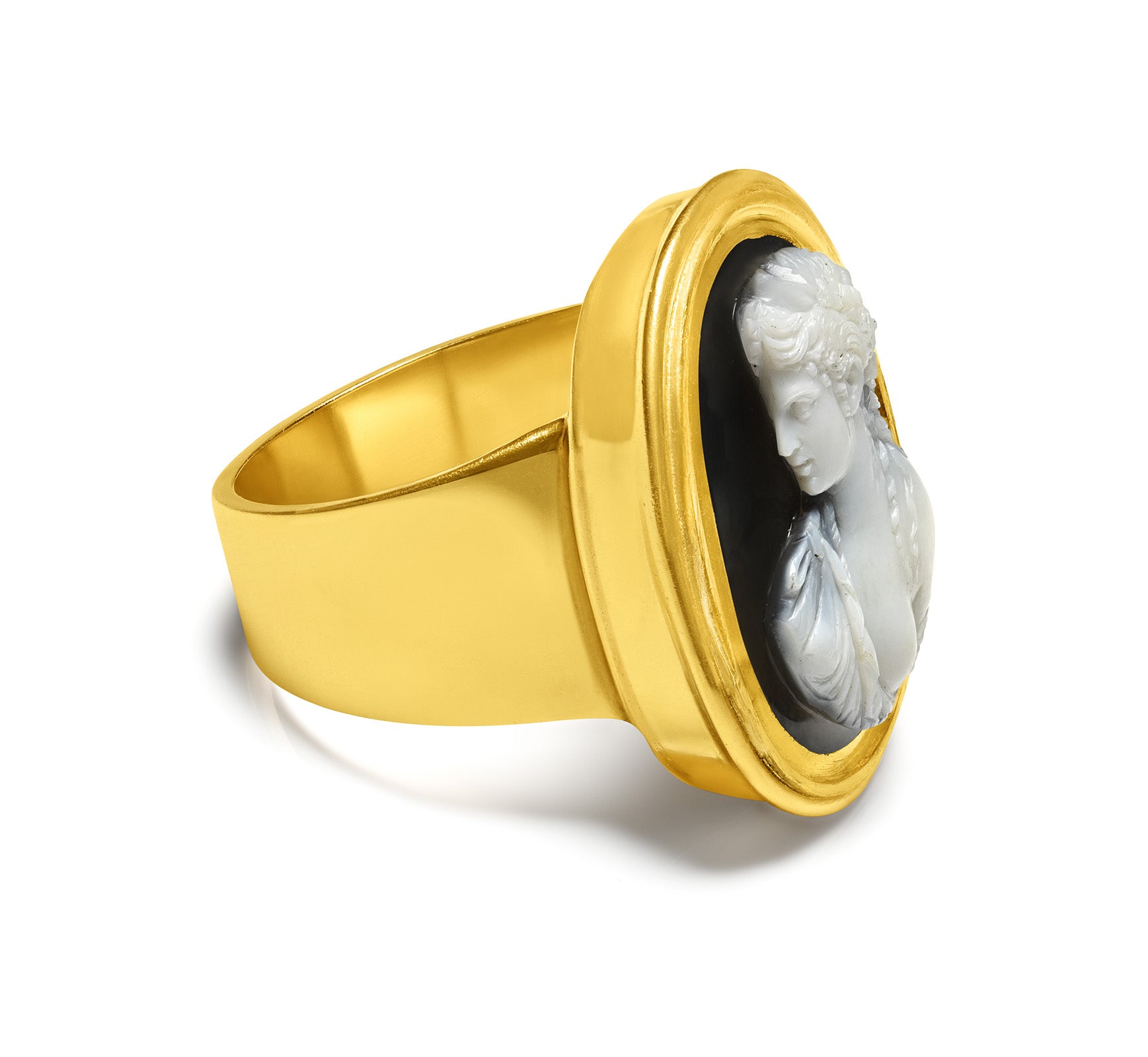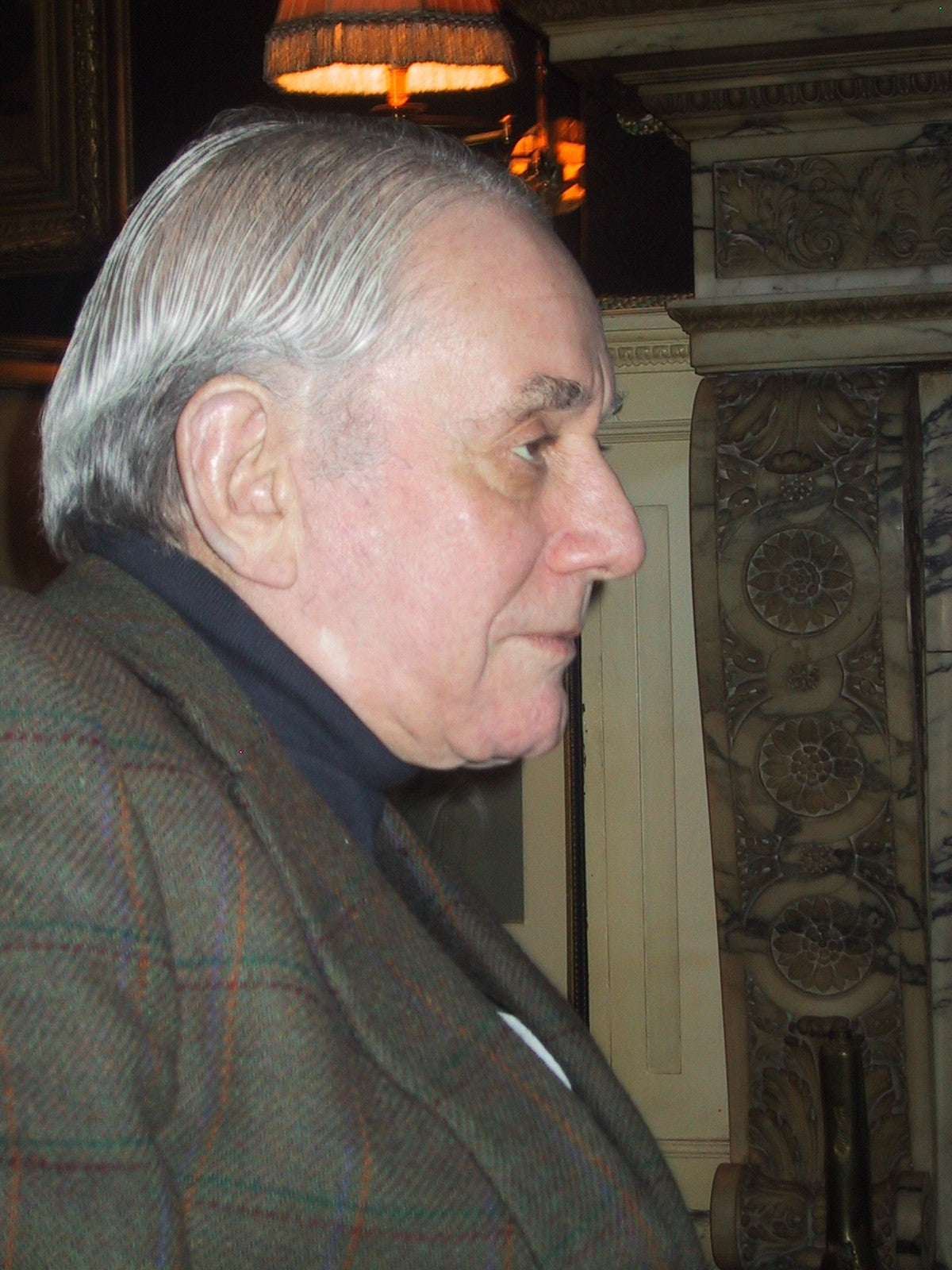
Kenneth Jay Lane: The King of Costume Jewelry
Kenneth Jay Lane revolutionized costume jewelry, blending bold creativity with affordable luxury.
A pioneer in vibrant, extravagant costume jewelry, Lane transformed the world of fashion accessories starting in the 1960s. His visionary designs continue to captivate vintage collectors and fashion connoisseurs alike.
From first ladies to Hollywood icons, Lane’s creations graced some of the most famous women of the 20th century, solidifying his reputation as the master of accessible elegance.
Kenneth Jay Lane’s illustrious clientele included Jackie Kennedy Onassis, Nancy Reagan, Barbara Bush, Princess Margaret, Princess Diana, the Duchess of Windsor, Elizabeth Taylor, Audrey Hepburn, and Greta Garbo.
Society darlings like Babe Paley and Nan Kempner also wore his designs, reflecting his widespread appeal among both royalty and socialites.

Vintage 1970's Kenneth Jay Lane KJL Glass Crystal Renaissance Style Bracelet
Kenneth Jay Lane's Path to Iconic Fashion
Born in Detroit, Michigan, in 1930, Kenneth Jay Lane’s journey to becoming a global fashion icon was anything but conventional.
According to George Gurley in the New York Social Diary, Lane visited New York City for the first time at the age of 15.
Even at that young age, Lane made an impression, arriving in a gray herringbone Chesterfield coat with a gray velvet collar. His trip was filled with theatrical glamour — daily visits to iconic performances like A Streetcar Named Desire, starring Marlon Brando, and Carol Channing’s electrifying stage acts.
This trip marked a pivotal moment in Lane’s life. He fell in love with New York, enchanted by its sophistication, its sparkling restaurants, and its impeccably dressed doormen. The contrast to his Midwestern upbringing was stark, and Lane, always playful, would jokingly pronounce his hometown "De-twah" with a French flair.
By high school, Lane had already set his sights on a glamorous future, exuding charm and ambition. While studying architecture at the University of Michigan, he frequently returned to New York, immersing himself in its artistic and bohemian culture.
During one of these visits, he discovered San Remo, a popular bar on MacDougal Street frequented by designers, actors, and eccentric creatives. It was there he met Carrie Donovan, a Parsons graduate working at Vogue. Lane believed that building the right connections was the key to success — and Donovan became a vital stepping stone in his illustrious career.
Kenneth Jay Lane’s introduction to the fashion elite began with Carrie Donovan, who introduced him to Hubert de Givenchy.
However, Lane’s ambitions lay elsewhere—he dreamed of becoming an art director at a glossy fashion magazine. Donovan orchestrated a meeting with Vogue's legendary Alexander Liberman, who quickly hired him. But Lane, ever restless, soon found the job uninspiring and sought more stimulating challenges.
In 1954, after graduating, Lane moved to New York permanently. His first apartment, a tiny, un-air-conditioned space above a printing shop on Jane Street, was far from glamorous. Dust and soot blackened his sheets daily, yet Lane embraced the city's grit with flair.
Sporting custom-made suits, derby hats from Locke, shirts from Turnbull & Asser, and shoes from Lobb, his impeccable style caught the attention of influential circles. this led to a position as an associate designer for Christian Dior, where he was quickly promoted to design director.
By 1961, Lane was firmly established in New York's fashion and social elite. During lunch at La Caravelle, the city’s latest hotspot, Lane was seated in its coveted corridor, the prime spot for seeing and being seen.
Fashion luminaries Diana Vreeland and Richard Avedon took notice, impressed by Lane’s "straightest part in New York"—his sharply defined hairstyle. That same day, Harper’s Bazaar reached out, and Vreeland requested Lane for a cover shoot alongside Sophia Loren, Halston, and two models.
Kenneth Jay Lane’s Costume Jewelry
At the time, Lane was designing shoes for runway shows, adding jewels to elevate the designs. For Arnold Scaasi’s collection, Lane also created jeweled buttons, earrings, and bracelets to match the embellished shoes.
By 1962, Lane’s faux jewelry was a sensation, with nearly every store on Fifth Avenue stocking his pieces. For Lane, it was still a side project—a playful venture for his stylish friends, including Mica Ertegun and Judy Peabody.
Everything changed in 1963 when Lane shifted his focus entirely to costume jewelry. Inspired by exquisite high-end jewels, he crafted bold, impeccably made pieces that redefined faux jewelry as glamorous and desirable.

Kenneth Jay Lane KJL 1990’s Green Red Glass Crystal Tassel Necklace
Lane’s designs gained even more recognition when the Duchess of Windsor became a fan, prompting a wave of media attention and skyrocketing demand.
Over the next five decades, Lane’s costume jewelry became beloved by celebrities, first ladies, and royalty alike. He saw his work as "art that becomes reality when worn by people."
Today, his iconic 1960s designs are prized by collectors, while his upscale collections continue to grace luxury boutiques and department stores. Lane also reached a broader audience through QVC, where his jewelry was featured for over 20 years, solidifying his legacy as a visionary in fashion jewelry.

Kenneth Jay Lane KJL 1960’s Crystal Chandelier Earrings
The Spirit of the 1960s and 1970s
The 1960s and 1970s were marked by radical cultural shifts and creative experimentation. Youth-driven movements, artistic freedom, and the embrace of bold aesthetics redefined fashion.
Kenneth Jay Lane’s jewelry perfectly embodied this era of audacity and flair. His vibrant designs—daring yet elegant—captured the unconventional spirit of the times. Traditionally, fine jewelry symbolized wealth and exclusivity.
Lane challenged this notion by drawing inspiration from luxury houses like Cartier and Bulgari, recreating their grandeur with non-precious materials. Using imitation pearls, rhinestones, and gold-plated metals, Lane transformed the idea of luxury, making it accessible to a wider audience.
His opulent creations blurred the line between costume and fine jewelry, redefining what was possible in fashion accessories.

Kenneth Jay Lane KJL 1960’s Blue Cabochon Glass Watch Bracelet
Patronage of Fashion Royalty
Kenneth Jay Lane’s rise to fame was propelled by Diana Vreeland, Vogue’s iconic editor-in-chief. A champion of his bold designs, Vreeland featured Lane’s jewelry prominently in Vogue, introducing it to the world’s fashion elite. Her endorsement cemented Lane’s reputation, attracting the admiration of Jackie Kennedy, Wallis Simpson (the Duchess of Windsor), and Elizabeth Taylor.
Lane’s talent for bridging high fashion and popular appeal was unmatched. His creations graced the necks and wrists of First Ladies Jackie Kennedy, Nancy Reagan, and Barbara Bush, each of whom reflected Lane’s adaptability in catering to diverse styles. One of his most iconic pieces, a "faux" pearl necklace worn by Jackie Kennedy, became a cultural symbol and a testament to his visionary approach.
Wallis Simpson, a long-time admirer, even helped settle a family dispute during a dinner party with her praise for Lane’s designs—a moment that showcased the power of his jewelry to win hearts and heal wounds.
Hollywood stars were equally captivated. Audrey Hepburn chose Lane’s earrings over designs by Van Cleef & Arpels and Cartier for her 1987 Blackglama ad, exemplifying his ability to rival the world’s top jewelry houses. Elizabeth Taylor, a connoisseur of fine jewelry, was another avid admirer.
Even today, Lane’s designs continue to inspire. Modern icons like Lady Gaga, Rihanna, Miley Cyrus, and Katy Perry have embraced his imaginative pieces, ensuring his legacy remains vibrant and relevant.

Kenneth Jay Lane 1980’s Blue Green Cabochon Glass Crystal Collar Necklace
The Bold Vision Behind Kenneth Jay Lane’s Creations
Kenneth Jay Lane’s designs exude audacity and imagination, setting him apart as a visionary in the world of costume jewelry. His signature pieces often drew inspiration from nature and mythology, featuring animals like leopards, tigers, and chameleons, as well as mythical creatures and ornate floral motifs.
Among his most coveted works is the "Big Cats" collection, which includes leopard and tiger pins that remain iconic today. Lane’s whimsical creativity extended to unusual subjects like rams’ heads, mermaids, and even walruses, all crafted with meticulous attention to detail.
Lane’s approach redefined luxury by emphasizing creativity over preciousness. Eschewing traditional gemstones, he embraced materials like Lucite, enamel, and Swarovski crystals.
His collaborations with German suppliers resulted in proprietary "faux" rubies, emeralds, and sapphires so lifelike they were often mistaken for the real thing. With his unparalleled craftsmanship and flair for the dramatic, Lane turned his jewelry into wearable works of art.

Broadening the Appeal of Glamour
Kenneth Jay Lane’s influence transcended high fashion. In the 1980s, his collaboration with Avon brought his designs to a wider audience, proving that glamour could be inclusive.
In the 1990s, he partnered with QVC to reissue his popular "Jewels of India" collection, reaching millions of homes. These ventures made his work accessible to women from all walks of life, further cementing his status as a pioneer in the democratization of luxury.
The vintage revival of the early 2000s saw a surge in interest in Lane’s earlier creations. Collectors eagerly sought his bold, statement-making pieces from the 1960s and 1970s, which had become valuable collectibles.
His influence during this period extended to the broader resurgence of oversized and dramatic jewelry, echoing the fearless elegance of his original designs.

Vintage Kenneth Jay Lane KJL Long Etruscan Style Green Glass Crystal Earrings
Kenneth Jay Lane’s Legacy in Context
To fully appreciate Lane’s contributions, one must consider the evolving landscape of mid-20th-century fashion. The austerity of the post-war 1950s gave way to the rebellious and self-expressive spirit of the 1960s.
Designers like Christian Dior reintroduced opulence with his "New Look," while Stanley Hagler elevated haute couture jewelry with intricate designs. Lane carried these ideals forward with a unique twist—his mission was to democratize glamour.
He drew heavily on historical influences, from the Art Deco styles of the 1920s to the ornate motifs of bygone eras, reinventing them for contemporary audiences. This ability to reinterpret the past while making it accessible became the hallmark of his enduring legacy.
Kenneth Jay Lane’s Enduring Influence
Kenneth Jay Lane’s influence continues to resonate in the realms of fashion and jewelry design. The bold, oversized jewelry trends seen today draw heavily from his groundbreaking vision. Lane’s work serves as a testament to how creativity, craftsmanship, and astute business sense can redefine an industry.
Known for his imaginative motifs and striking use of color, Lane’s designs brought a sense of whimsy to everyday style. From serpents and elephants to fish and flowers, his pieces remain vibrant and full of wit, embodying his belief that style is about making a statement.
"Style isn’t about being chic, glamorous, or expensive," Lane once said. "It’s about making a splash."
His philosophy is perhaps best captured in a story about Liz Taylor. At a yacht party where most guests adhered to a navy-and-white dress code, Taylor arrived in head-to-toe white lace—dress, shoes, and handbag—stealing the spotlight with her bold choice.
Lane believed no woman should leave the house without earrings, a sentiment echoed by countless admirers of his work.

Vintage Kenneth Jay Lane Mughal Style Green Red Resin Crystal Earrings
Remembering Kenneth Jay Lane
Kenneth Jay Lane, a renowned costume jeweler and beloved Manhattan socialite, passed away in 2017 at the age of 85. His death marked the end of an era in American glamour.
"With him, a great piece of American glamour is gone—it all goes with him," said Vanity Fair contributing editor Reinaldo Herrera, a longtime friend. "His style was his passport into society. He got to know the world, and the world got to know him."
Lane’s global reputation was unparalleled. As Manhattan hostess Susan Gutfreund recalled, "I was on a beach in Bahia, Brazil, recently, and somebody came up to me and said, ‘How’s Kenny?’"
Lane’s curiosity about the world was matched only by his knowledge of it. Close friend Count Riprand Arco-Zinneberg, a great-grandson of King Ludwig III of Bavaria, recounted, "He was deeply knowledgeable about art history. Once, at a castle in the Czech Republic, Kenny spotted a painting and said, ‘That’s a Ribera.’ The owner disagreed, but Kenny was right."
Why Every Collector Needs Kenneth Jay Lane
Every jewelry collector should own at least one piece of Kenneth Jay Lane’s vintage costume jewelry. His "fabulous fakes" seamlessly blend with fine jewelry, enhancing any ensemble and elevating personal style.
In a world of fleeting trends, Lane’s creations remain timeless—an enduring reminder that true style is about standing out, not blending in.
Cover Photo: D C McJonathan via Wikimedia Commons
Sources:
- Schiffer, Nancy. Jewelry by Southwest American Indians: Evolving Designs.
- Miller, Judith. Miller's Costume Jewellery.
- Gurley, George. George Gurley’s New York: Kenneth Jay Lane, New York Social Diary.
- Vanity Fair.
- CostumeJewelryCollectors.com.


